18 A. Mechanical Design (part 1 of 2)
Assignment
Group assignment
- Design a machine that includes mechanism + actuation + automation
- Build the mechanical parts and operate it manually.
- Document the group project
Individual assignment
- Document your individual contribution.
Group project documentation
I did this work with Aleksi, but we both have our own documentation. You can choose whether you want to read Aleksi's documentation, my documentation or both. Both should contain the same things with small differences.
-
Antti's Documentation
-
Aleksi's Documentation
My mechanical design
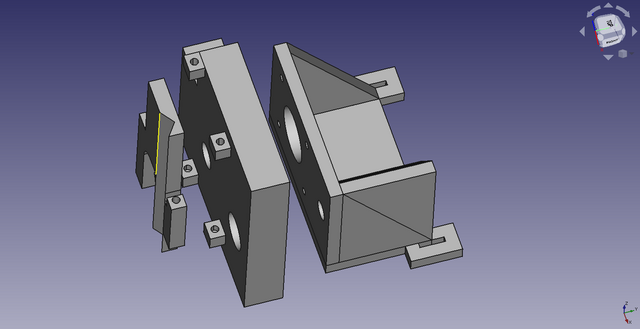 |
| Mechanics |
 |
| Mechanics |
Mounting the stepper motor on the slide rail
My job was to design the mechanics from the top of the slide rail to the pen. As components, I chose a stepper motor with a threaded rod and an 8mm thick sliding shaft and a bearing suitable for the sliding shaft. The attachment of these parts to the slide rail had to be designed firmly enough for the pen movement mechanism to be stable enough. I chose the 3D-printed plastic mounting bracket as the manufacturing technique. The slide rail had a bracket with 2 bolt holes for mounting. I measured the attachment on the slide rail with a caliper and entered the dimensions into the FreeCAD model. The stepper motor was NEMA 17 compliant, so I took the exact dimensions of the motor mount from the data sheet and modeled the mount with FreeCAD. In addition to the stepper motor, an 8mm sliding shaft was added to the bracket, which I fitted next to the stepper motor so that everything fit nicely into the mounting on the slide rail. The purpose of the sliding shaft is to stabilize the mechanics of the pen holder to a certain position and to enable the use of a threaded shaft. The attached picture should clarify the matter.
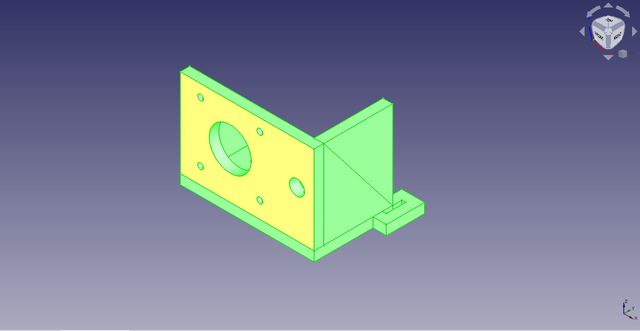 |
| Motor mount |
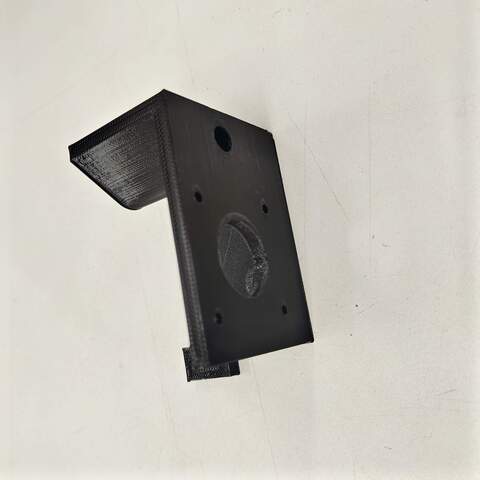 |
| Motor mount, 3D printed |
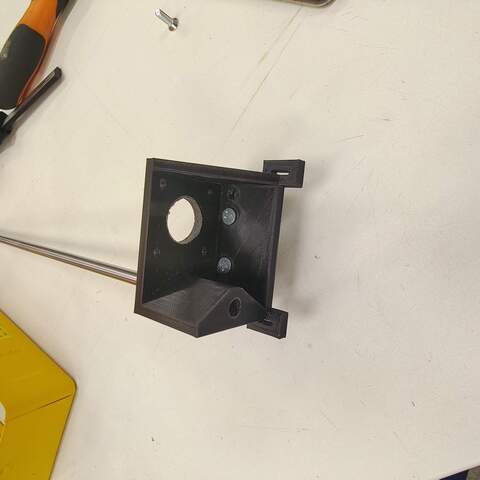 |
| Slide rail and shaft mounted |
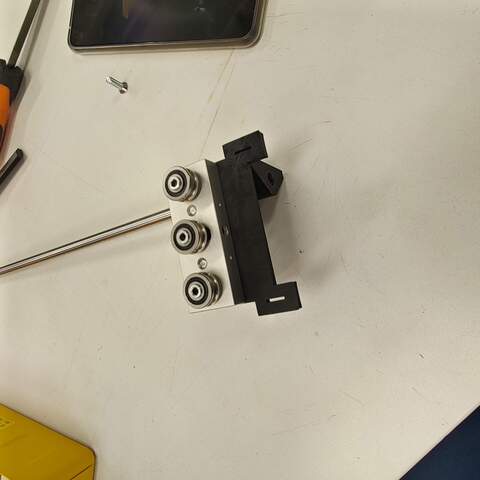 |
| Slide rail and shaft mounted |
Pen holder version 1
I modeled a simple pen holder with FreeCAD while making the stepper motor mount bracket. This bracket was almost the simplest possible - it didn’t even have a mechanism for lifting or lowering the pen. The intention was to get only the first prototype ready and see how it could work. Controlling the pen requires some kind of motor and mechanics that have not yet been designed.
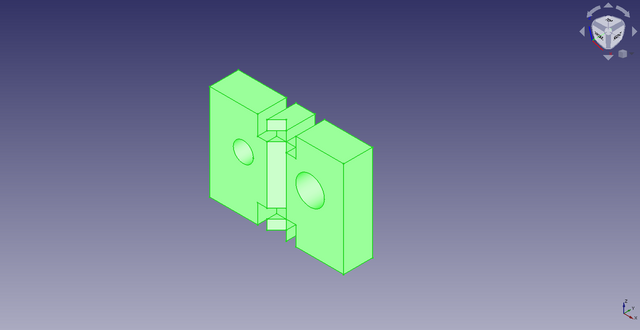 |
| Pen Holder v1 |
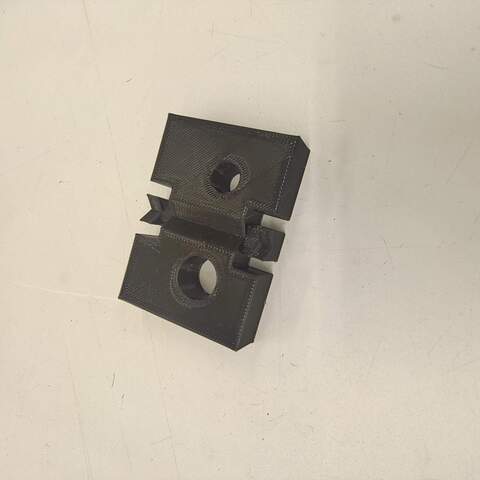 |
| Pen holder v1, 3D printed |
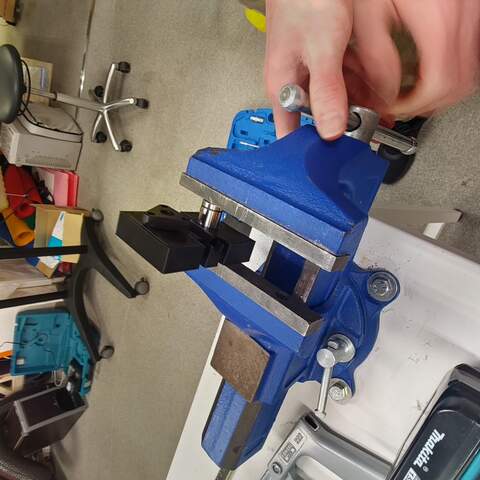 |
| Installing linear bearing |
Pen holder version 2
The pen holder v1 worked as planned - that is, incompletely :). A solution to the pen lifting and lowering mechanism was considered. I wanted to use a stepper motor but the Fab Lab didn’t have a suitably sized motor because it would have to be pretty small. The use of a servomotor was also studied, but the integration of a stepper motor into a control that already had stepper motors seemed easier. Aleksi suggested that the old CD-ROM drive usually has suitably sized stepper motors. Jani said there is a few old computers in the junkyard of the Faculty of Information and Electrical Engineering where CD-ROM drives could be found. I went to retrieve an old computer with 2 CD-ROM drives from the trash. I disassembled the CD-ROM drives and studied their mechanics. One had a normal DC motor and an encoder to read the motor position and the other had a stepper motor, good. In addition to the stepper motor, the CD-ROM drive's read head mechanics had small 3mm diameter sliding shafts that I also removed for reuse.
I measured the removed parts with a caliper and wondered how to get the pen lifting and lowering mechanics implemented sensibly. I had modeled the original mechanics in a really compact space and there was only about 20mm of space between the shafts. The pen fits well in the space, but not much else. The original mechanics were perfect at the time so I didn’t want to start changing it anymore. After thinking, I left the pen between the shafts and placed the stepper motor on the other side of the shaft. It was pretty easy and the mechanics remained compact.
I made a new pen holder with a 3D printer in two parts. The parts slide against each other and I didn’t leave any extra space between them during the design phase even though it came to mind. It was a slight mistake, as the mechanics did not slide very freely when assembled and the small stepper motor would not have been able to move it in any way. I solved the problem by sanding the parts a little with sandpaper and a file. Next time I will definitely put a ~ 0.2mm gap in the 3D model when I do mechanics like this to avoid the nasty post-processing. Lessons learned :)
 |
| Pen holder v2 |
 |
| Pen holder v2 part 1 |
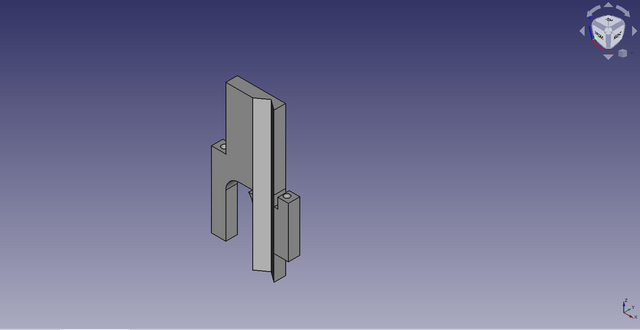 |
| Pen holder v2 part 2 |
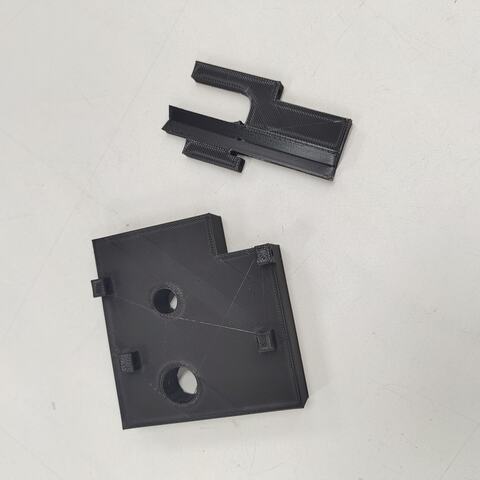 |
| Pen holder v2, 3D printed |
 |
| Pen holder v2 assembled |
Further improvement ideas
The mechanics I designed worked roughly as expected. However, there are some room for improvement.
1) The mechanism that moves the pen using stepper motor and threaded rod is not completely stable. The farther from the stepper motor the pen holder is driven the more unstable it goes. As an improvement, one sliding shaft can be added. Now there is only one real sliding shaft (8mm in diameter, ~ 30cm long) and another shaft is a threaded rod permanently attached to the stepper motor whose rigidity does not correspond to the real sliding shaft.
2) The pen holder can be improved. It could easily be made about half as thin. The smaller bracket saves plastic, is lighter and looks nicer. However, the rigidity of the mechanics must be taken into account.
Final thoughts
This exercise taught me a lot about mechanics with stepper motors that I had no previous experience with. I also gained more experience in 3D design, although I am still not happy with the level of expertise in it.













